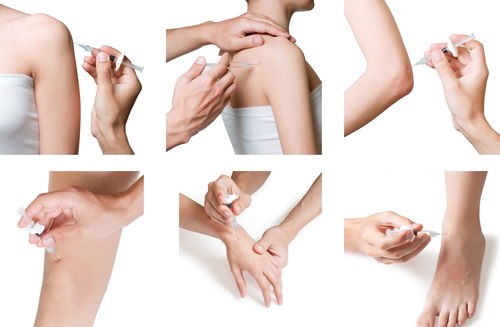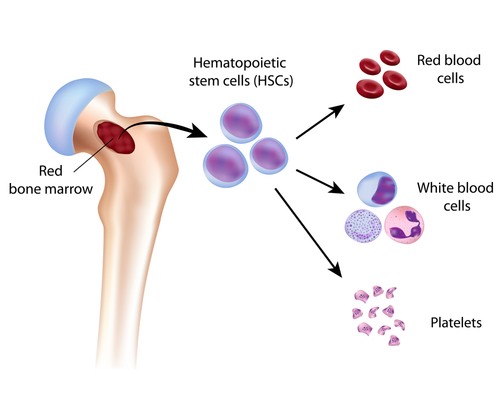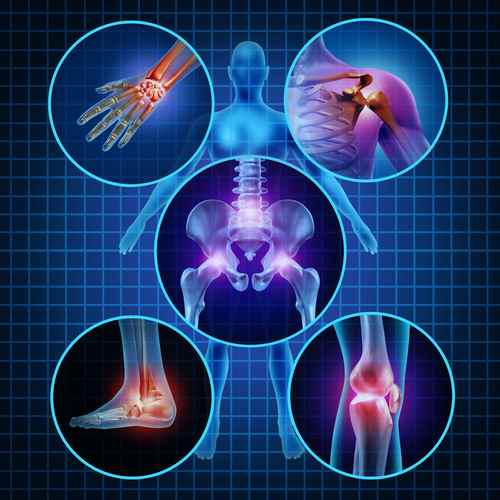Platelet Rich Plasma/PRP
Tendons and ligaments connect muscles to bones, making it possible to do all kinds of physical activities.
Overuse or damage to tendons over a long period of time causes collagen fibers that make up the
tendons to form small tears, a condition called tendonosis. Ligaments are composed of collagen fibers and
hold bones together, stabilizing joints and controlling the range of motion. Tendons and ligaments have poor blood supply
and they do not easily recover from damage caused by sprains, strains, and repetitive motion.

What is Platelet Rich Plasma (PRP)?
Platelet Rich Plasma (PRP) is tissue components of the patient’s buffy coat that includes Leukocytes, Erythrocytes,
Platelets, and Plasma. It provides a concentrated harvested tissue to be used as living tissue graft.
The graft is immediately implanted to the patient by the physician to seal, fill, and replace tissue loss due to injury
with autologous cells that are inherently compatible with the patient’s physiology.


I’ve heard of Cortisone Shots; is this same?
Studies have shown that cortisone injections may actually weaken tissue. Cortisone shots may provide a quick fix for temporary relief and lessening of inflammation, but the doctor can only do them a few times in any area because of this tissue weakening effect. They do not generally provide long term benefits.
What are the Potential Benefits of Treatment?
Patients can see a significant improvement in symptoms. This may eliminate the need for more aggressive treatments such as long term medication or surgery, as well as a remarkable return of function.
How many treatments & How often is this therapy?
While responses to treatment vary, most people will require 3-6 sets of injections. Each set of treatments is spaced approximately 4 weeks apart. There is no limit to the number of treatments you can have, the risks and side effects do not change with the number of injections.
Are there any special instructions?
You are restricted from the use of non-steroidal anti-inflammatory medications (NSAIDs) one week prior to the procedure and throughout the course of treatments.
Initially the procedure may cause some localized soreness and discomfort. Most patients only require some extra-strength Tylenol to help with the pain. Ice and heat may be applied to the area as needed.
The first week after the procedure, patients will continue their home or physical therapy program, but aggressive physical activity is discouraged.
How soon can I go back to regular physical activities?
PRP therapy can be beneficial for tendons and ligaments but it is not a quick fix. This therapy is stimulating the growth and repair of tendons and ligaments requiring time and rehabilitation. Through regular visits, the Physician will determine when you are able to resume regular physical activities.
Does insurance pay for PRP?
At present time, PRP injections are cash pay only.
What are tendons & Ligaments?
Tendons connect muscles to the bone, making it possible for you to do many every day physical activities. Overuse or damage to the tendon over a long period of time causes the collagen fibers in the tendons to form small tears, a condition called tendinosis. Damage to tendons most often occurs in the knee, ankle, shoulder, wrist, biceps, calf, and Achilles tendons.
Ligaments are composed of collagen fibers that hold one bone to another, stabilizing the joint and controlling the range of motion. When a ligament is damaged, it is no longer able to provide support, weakening the joint.
Tendons and ligaments have poor blood supply. Combined with the stress of day-to-day activities, they do not easily recover from damage. As a result the tendons and ligaments become inefficient causing chronic pain and weakness. Medical intervention is now possible in a new way.
For more information call: David Woolsey 855-36MSKUS (855-366-7587)
Is PRP right for me?
If you have a tendon or ligament injury and traditional methods have not provided relief, then PRP therapy may be the solution. The procedure is less aggressive and less expensive than surgery. There will be an initial evaluation with the doctor to see if PRP therapy is right for you.
PRP injections can be helpful for treatment of:
o Spine
o Sacroiliac joint
o Iliolumbar ligaments
o Facet joints
o Interspinous ligaments
o Shoulders
o Rotator cuff–partial tears
o Biceps tendinosis
o Chronic glenohumeral ligament sprains
o Acromio-clavicular joint dysfunction and pain
o Levator scapulae tendinosis
o Elbows
o Epicondylitis–medial and lateral–tennis elbow and golfer’s elbow
o Ulnar collateral ligament injury
o Distal biceps tendon partial tear
o Wrist & Hand
o Chronic thumb sprain
o Joint arthritis
o Hip/Pelvis/SI joints
o Piriformis syndrome
o Greater trochanteric bursitis
o Sacroiliac joint dysfunction
o Hamstring strain
o Ischial tuberosity bursitis
o Hip joint arthritis
o Osteonecrosis of the femoral head
o Symphysis pubis pain
o Knee
o Patellar tendinitis/tendinosis
o Osgood-Schlatter’s disease
o Quadraceps strain or partial tear
o Degenerative arthritis
o Rheumatoid arthritis
o Chondromalacia patella
o Enthesopathy
o Lower leg
o Calf pain
o Ankle & Foot
o Chronic ligament strains
o Chronic Achilles tendinosis
o Chronic partial tendon tear
o Plantar fascitis
o Arthritic joints
o Osgood-Schlatter’s disease
You should not have PRP therapy if you have abnormal platelet function, active systemic infection, active cancer, low-platelet count or severe anemia.
